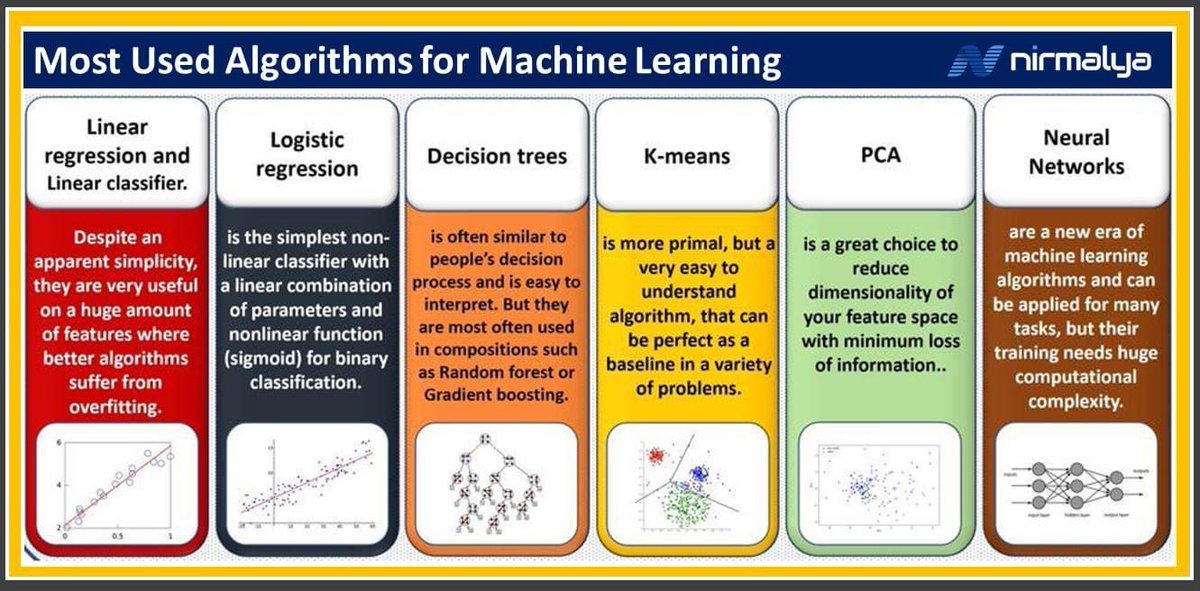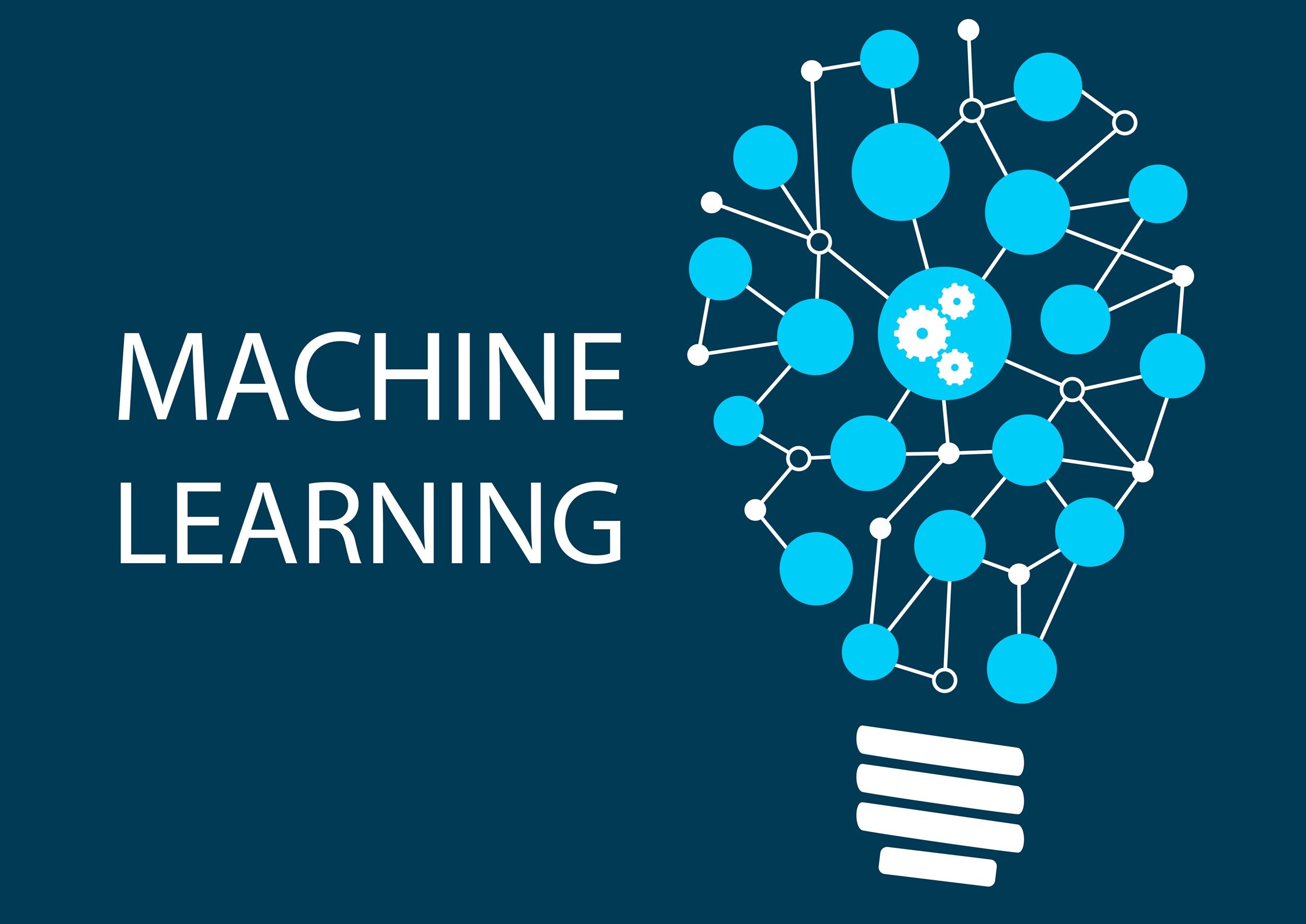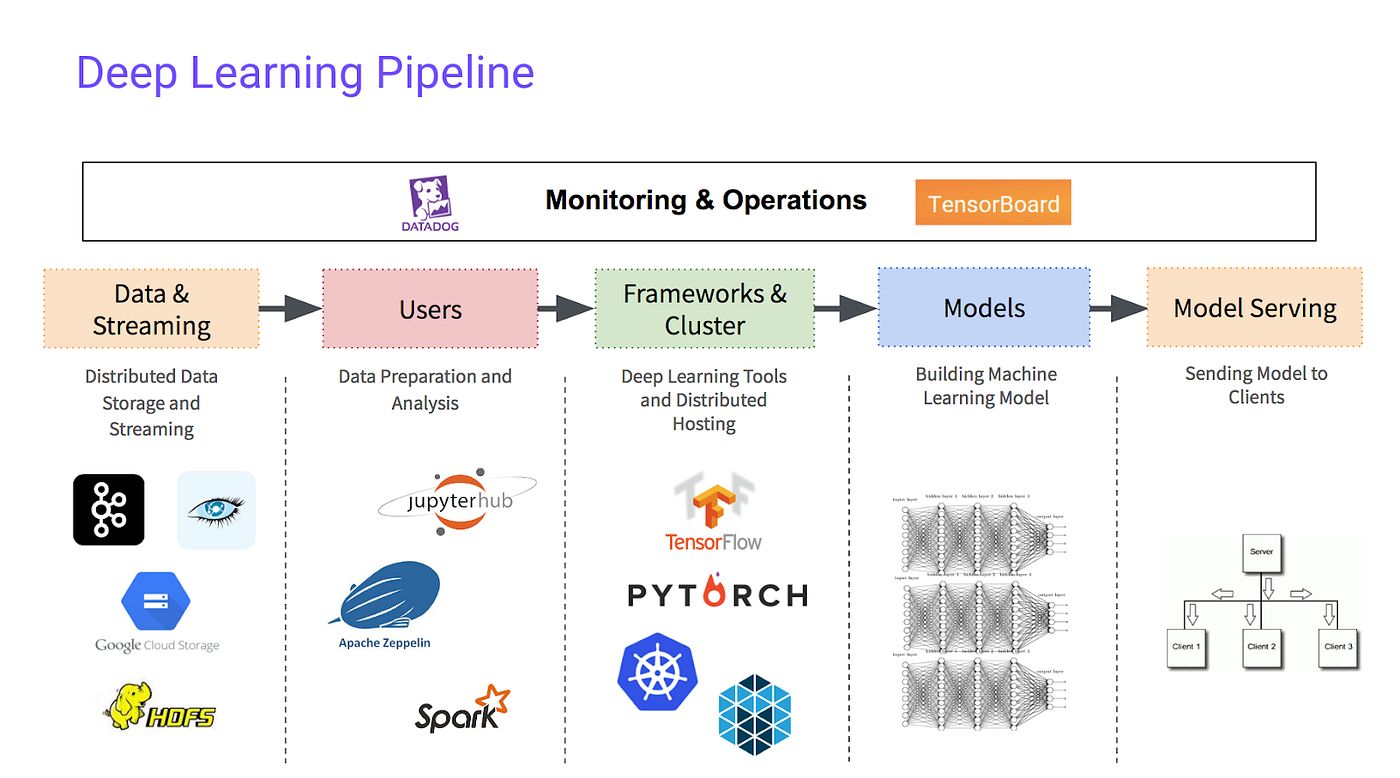Introduction
Machine learning has become a buzzword in recent years, revolutionizing various industries and transforming the way we live and work. From virtual assistants like Siri to self-driving cars, machine learning algorithms are powering a wide array of applications. But what exactly is machine learning, and how can it be useful in different scenarios?
Put simply, machine learning is a subset of artificial intelligence that enables computers to learn and make predictions or decisions without being explicitly programmed. Instead, they are fed large amounts of data and use statistical techniques to automatically learn patterns and generate insights. This ability to learn and adapt makes machine learning algorithms incredibly powerful and versatile.
There are different types of machine learning algorithms, including supervised learning, unsupervised learning, and reinforcement learning. While supervised learning involves training a model with labeled data and making predictions based on that training, unsupervised learning aims to find patterns in unlabeled data. Reinforcement learning, on the other hand, focuses on learning by taking actions and receiving feedback from the environment.
So, when is machine learning most useful? The answer lies in the nature of the problem you are trying to solve. Machine learning excels in situations where traditional programming approaches may be difficult, impractical, or too time-consuming. For instance, if you need a system to classify thousands of images, it would be much faster and efficient to train a machine learning model than to manually write rules for each image.
Moreover, machine learning is particularly valuable when dealing with complex problems that involve large amounts of data. For example, in the field of healthcare, machine learning algorithms can analyze massive datasets of patient records to identify patterns and make accurate predictions about diseases or treatment outcomes. This data-driven approach can revolutionize medical diagnosis and personalized treatment plans.
Another area where machine learning shines is in tasks that require continuous learning and adaptation. As new data becomes available, machine learning models can be updated and retrained to stay up-to-date and improve their performance over time. This is crucial in dynamic environments where the data distribution may change or new patterns may emerge.
In the following sections, we will explore some specific examples of machine learning applications and discuss when and why machine learning should be used. We will also delve into the benefits and challenges of implementing machine learning solutions to gain a comprehensive understanding of this powerful technology.
Understanding Machine Learning
Machine learning is a powerful tool that allows computers to learn from data and improve their performance over time. To understand how machine learning works, it’s important to grasp the basic concepts and mechanisms behind it.
At its core, machine learning involves training a model using data and using that model to make predictions or take actions on new, unseen data. The model learns from the patterns and relationships present in the training data, enabling it to make accurate predictions on similar data in the future.
One crucial aspect of machine learning is the use of algorithms. These algorithms play a vital role in analyzing the data, finding patterns, and making predictions or decisions. There are various types of machine learning algorithms, each with its own strengths and weaknesses.
In supervised learning, the most common type of machine learning, the model is trained using labeled data. Labeled data consists of input samples paired with their corresponding output or target values. The model learns to map the input to the correct output based on these examples. Once trained, the model can predict the output for new, unseen data.
Unsupervised learning, on the other hand, deals with unlabeled data. Instead of having target values, the algorithm aims to discover patterns or structure in the data. Clustering algorithms, for example, group similar data points together based on their inherent similarities.
Reinforcement learning is a type of machine learning where an agent interacts with an environment and learns to take actions to maximize rewards or minimize penalties. The agent explores the environment, receives feedback in the form of rewards or punishments, and adjusts its actions accordingly to optimize its performance.
Machine learning models can also be categorized as either simple or complex. Simple models, such as linear regression, use basic mathematical functions to model the data. Complex models, such as deep neural networks, are capable of capturing intricate relationships and patterns across multiple layers of interconnected nodes.
To assess the performance of a machine learning model, evaluation metrics are used. Common evaluation metrics include accuracy, precision, recall, and F1 score, which provide insights into the model’s predictive capabilities.
Overall, machine learning is a field that combines statistics, mathematics, and computer science to enable computers to learn from data and make intelligent decisions. By understanding how machine learning works at a fundamental level, we can better appreciate its capabilities and harness its power in a wide range of applications.
Types of Machine Learning Algorithms
Machine learning algorithms form the backbone of the machine learning process, allowing models to analyze data, identify patterns, and make predictions or decisions. There are several types of machine learning algorithms, each suited for different types of problems and datasets.
1. Supervised Learning Algorithms: In supervised learning, the algorithm is trained using labeled data, where each data point has a corresponding target value. These algorithms learn to map the input data to the correct output based on the provided labels. Examples of supervised learning algorithms include linear regression, decision trees, support vector machines, and neural networks.
2. Unsupervised Learning Algorithms: Unsupervised learning algorithms work with unlabeled data, aiming to discover patterns or structure in the dataset. These algorithms do not have access to target values and instead focus on finding similarities, clustering the data, or reducing its dimensionality. Popular unsupervised learning algorithms include k-means clustering, hierarchical clustering, and principal component analysis (PCA).
3. Reinforcement Learning Algorithms: Reinforcement learning algorithms involve an agent that interacts with an environment, learning how to take actions to maximize rewards or minimize penalties. The agent explores the environment, receives feedback as rewards or punishments, and adjusts its actions accordingly to optimize its performance. Reinforcement learning algorithms are commonly used in areas such as robotics, game playing, and autonomous vehicle control.
4. Deep Learning Algorithms: Deep learning algorithms, a subset of neural networks, are designed to process and learn from large, complex datasets. These algorithms are capable of automatically learning intricate patterns and relationships by using multiple layers of interconnected nodes (artificial neurons). Deep learning has achieved remarkable success in various applications, including image and speech recognition, natural language processing, and autonomous driving.
5. Transfer Learning Algorithms: Transfer learning algorithms leverage knowledge gained from one problem domain and apply it to another related problem. Instead of training a model from scratch, transfer learning utilizes pre-trained models that have learned from a large dataset in a different domain. By fine-tuning the pre-trained model on a smaller target dataset, transfer learning enables faster model development and improved performance.
Each type of machine learning algorithm has its strengths and limitations. The choice of algorithm depends on the nature of the problem, the available data, and the desired outcome. Understanding the various types of machine learning algorithms allows data scientists and practitioners to select the most appropriate approach for their specific needs.
When Is Machine Learning Useful?
Machine learning has become increasingly valuable across various industries and domains, providing powerful solutions to complex problems. Understanding when machine learning is most useful can help businesses and organizations leverage this technology effectively. Here are some scenarios where machine learning can be particularly beneficial:
1. Large and Complex Datasets: When dealing with massive amounts of data, traditional analytical methods may fall short in extracting meaningful insights. Machine learning algorithms excel at analyzing vast datasets, uncovering patterns, and identifying hidden relationships that may not be apparent through manual analysis alone.
2. Continuous Learning and Adaptation: Machine learning models can continually update and adapt as new data becomes available. This capability is especially valuable when dealing with dynamic environments or when the underlying patterns and relationships in the data may change over time.
3. Automating Repetitive Tasks: Machine learning can automate repetitive and time-consuming tasks that would otherwise require manual intervention. This includes tasks like data entry, sorting, and categorization, freeing up human resources for more value-added activities.
4. Real-Time Decision Making: In applications where immediate decisions need to be made based on incoming data, machine learning algorithms can analyze and process data in real-time. This is particularly useful in areas such as fraud detection, network security, and intelligent trading systems.
5. Prediction and Forecasting: Machine learning models excel in making predictions and forecasts based on historical data. They can identify patterns and trends in the data to make accurate predictions about future events. This is invaluable for sales forecasting, demand planning, and risk analysis.
6. Personalization and Recommendation: Machine learning algorithms power personalized content and recommendation systems, which enhance user experiences and drive engagement. Whether in e-commerce, media streaming, or social media platforms, machine learning enables targeted and personalized recommendations to users based on their preferences and behaviors.
7. Complex Decision-Making: When faced with complex decision-making scenarios involving multiple variables and factors, machine learning models can provide valuable insights. By analyzing historical data and learning patterns, these models can assist in making informed decisions across fields such as healthcare, finance, and logistics.
Machine learning is most effective when applied to problems where traditional programming approaches may be time-consuming, impractical, or challenging. By leveraging machine learning algorithms and techniques, organizations can unlock the power of data to drive innovation, gain a competitive edge, and make data-driven decisions.
Examples of Machine Learning Applications
Machine learning has found its way into a wide range of industries and applications, transforming the way we work and live. Here are some notable examples of machine learning applications:
1. Healthcare: Machine learning is revolutionizing the healthcare industry by enabling more accurate diagnoses, personalized treatment plans, and proactive disease prevention. Machine learning algorithms can analyze vast amounts of patient data, including medical records, lab results, and genomic data, to identify patterns and predict diseases, recommend treatment options, and detect potential adverse events.
2. Financial Services: Machine learning is widely used in the financial sector for various applications, including fraud detection, risk assessment, and algorithmic trading. Machine learning algorithms can analyze large volumes of financial data to detect anomalies, identify fraudulent transactions, and predict market trends, improving security, reducing risks, and maximizing investment strategies.
3. E-commerce: Machine learning powers personalized product recommendations, customer segmentation, and dynamic pricing in e-commerce platforms. By analyzing customer behavior, preferences, and purchase history, machine learning algorithms can recommend relevant products, create customized shopping experiences, and optimize pricing strategies to increase sales and customer satisfaction.
4. Transportation: Machine learning plays a critical role in autonomous vehicles, optimizing route planning, and improving traffic management systems. Machine learning algorithms can analyze real-time data, including traffic patterns, weather conditions, and driver behavior, to make informed decisions and enhance safety, efficiency, and navigation accuracy.
5. Natural Language Processing: Machine learning algorithms power natural language processing applications, such as virtual assistants (e.g., Siri, Alexa), language translation services, and sentiment analysis. These algorithms can understand and process human language, enabling interaction with machines through voice commands, generating accurate translations, and extracting insights from text data.
6. Manufacturing and Supply Chain: Machine learning is used in manufacturing to optimize production processes, detect faults, and enhance product quality control. Machine learning algorithms can analyze sensor data, predict equipment failures, and adjust operating parameters in real-time to improve efficiency and reduce downtime. In supply chain management, machine learning can optimize inventory management, demand forecasting, and logistics planning.
7. Energy and Utilities: Machine learning is applied in energy and utilities to optimize energy consumption, predict equipment failures, and improve energy efficiency. Machine learning algorithms can monitor energy consumption patterns, identify anomalies, and recommend methods for reducing energy consumption or optimizing electricity generation, leading to cost savings and sustainability.
These are just a few examples of how machine learning is applied across various industries. The versatility of machine learning algorithms and their ability to handle complex problems and large datasets make them valuable tools in driving innovation, improving decision-making, and delivering transformative solutions.
When to Use Machine Learning
Machine learning is a powerful technology that can be applied to a wide range of problems and domains. However, it’s important to consider certain factors when deciding whether to use machine learning for a specific task. Here are some key considerations for determining when to use machine learning:
1. Availability of Sufficient and Relevant Data: Machine learning algorithms require large amounts of data to learn and make accurate predictions. Before considering machine learning, it’s important to assess whether there is enough relevant data available for training the models. Additionally, the quality and representation of the data play vital roles in the efficacy of the machine learning solution.
2. Complexity of the Problem: Machine learning shines when dealing with complex problems that may be difficult to solve using traditional programming approaches. If the problem involves intricate patterns, nonlinear relationships, or multi-dimensional data, machine learning can help uncover hidden insights and make informed decisions.
3. Time and Cost Considerations: Implementing machine learning solutions can require significant time, resources, and expertise. It’s important to evaluate whether the potential benefits of using machine learning outweigh the associated costs. For tasks that warrant automation or can yield significant returns, investing in machine learning may be worthwhile in the long run.
4. Prediction or Decision-Making Requirements: If the task involves making predictions based on historical data or taking decisions based on real-time information, machine learning can offer valuable insights. Machine learning models can learn from past patterns and trends to predict future outcomes or optimize decision-making in dynamic environments.
5. Repetitive or Labor-Intensive Tasks: Machine learning is particularly useful for automating repetitive, time-consuming tasks that would otherwise require manual effort. By training models to perform these tasks, businesses can free up human resources for more strategic and creative activities, improving efficiency and productivity.
6. Personalization and Recommendation: If the task involves providing personalized experiences or recommendations to users based on their preferences or behavior, machine learning can be advantageous. Machine learning algorithms can analyze individual data and generate tailored recommendations, leading to improved user satisfaction and engagement.
7. Ability to Continuously Learn and Adapt: Machine learning models have the advantage of being able to learn and adapt as new data becomes available. This is particularly valuable in dynamic environments where the data distribution may change or where new patterns and trends emerge over time.
By considering these factors and aligning them with the problem at hand, businesses and individuals can determine whether machine learning is the right approach. Machine learning can unlock new opportunities, optimize processes, and deliver valuable insights, but it is important to make informed decisions based on careful evaluation.
Benefits of Using Machine Learning
Utilizing machine learning brings numerous benefits and advantages to organizations across various industries. Here are some key benefits of using machine learning:
1. Improved Accuracy and Precision: Machine learning algorithms can analyze large volumes of data and identify patterns and trends that may go unnoticed by humans. This leads to more accurate predictions, better decision-making, and improved overall accuracy in various tasks, such as fraud detection, demand forecasting, and medical diagnosis.
2. Automation of Repetitive Tasks: Machine learning can automate repetitive and mundane tasks, reducing human intervention and freeing up valuable time and resources. This allows employees to focus on more high-level and strategic activities, leading to increased productivity and efficiency.
3. Enhanced Personalization and Customer Experience: Machine learning algorithms can analyze large amounts of customer data to provide personalized recommendations, tailored experiences, and targeted marketing campaigns. By understanding individual preferences and behaviors, organizations can deliver more relevant and engaging customer experiences, leading to increased customer satisfaction and loyalty.
4. Optimized Decision-Making: Machine learning models can process vast amounts of data, consider multiple variables and factors, and make data-driven decisions with speed and accuracy. This enables organizations to optimize business strategies, streamline operations, and make informed decisions in real-time.
5. Efficient Resource Allocation: Machine learning algorithms can optimize resource allocation by analyzing historical data, predicting future demand, and identifying areas of inefficiencies. This applies to various industries, such as supply chain management, energy consumption, and workforce planning, leading to cost reductions and improved resource utilization.
6. Identifying Hidden Insights: Machine learning can uncover hidden patterns, relationships, and insights within datasets that may not be readily apparent. By leveraging these insights, organizations can gain a deeper understanding of their business, market trends, and customer behavior, enabling them to make informed decisions and gain a competitive edge.
7. Continuous Learning and Adaptation: Machine learning models have the ability to continuously learn and adapt as new data becomes available. This makes them well-suited for evolving environments and dynamic datasets, ensuring that the models stay relevant and accurate over time.
8. Speed and Scalability: Machine learning algorithms can process and analyze large volumes of data quickly and efficiently. This allows organizations to scale their operations and handle increasingly complex and large datasets, enabling more robust and reliable insights and predictions.
By harnessing machine learning, organizations can gain a competitive advantage, drive innovation, and unlock new opportunities. The benefits of using machine learning extend beyond specific applications, enabling organizations to make data-driven decisions, automate tasks, and deliver personalized experiences that enhance customer satisfaction and drive business success.
Challenges of Using Machine Learning
While machine learning offers immense potential and benefits, there are also several challenges that organizations may face when implementing and using machine learning techniques. Understanding these challenges is crucial to effectively harness the power of machine learning. Here are some common challenges:
1. Data Quality and Availability: Machine learning algorithms heavily rely on data for training and making predictions. However, data quality issues, such as missing values, outliers, or biased data, can adversely affect the performance and accuracy of the models. Additionally, obtaining relevant and clean data can be a challenge, especially in industries with strict privacy regulations.
2. Interpretability and Explainability: Machine learning models often work as “black boxes,” making it challenging to understand and interpret their decision-making process. This lack of transparency can be problematic in critical domains where explanations and justifications are required, such as healthcare or finance, raising ethical and regulatory concerns.
3. Model Overfitting or Underfitting: Machine learning models are susceptible to overfitting (capturing noise or irrelevant patterns) or underfitting (lack of learning meaningful patterns) when they are not appropriately trained on the available data. Balancing the complexity of the model and the amount of available data is crucial to mitigate these issues and ensure optimal model performance.
4. Computational Resources and Scalability: Building and training complex machine learning models often require substantial computational resources, including processing power, memory, and storage. Scaling up these resources to handle large datasets and complex algorithms can be costly and challenging for organizations, especially for smaller businesses or those with limited infrastructure.
5. Bias and Fairness: Bias can be inadvertently learned by machine learning models due to biased training data or biased decision-making during the model development process. This can result in the perpetuation of societal biases or discriminate against certain individuals or groups. Ensuring fairness and mitigating biases in machine learning models is an ongoing challenge that requires careful attention and unbiased data representation.
6. Ethics and Responsible AI: Machine learning raises ethical concerns, such as privacy, security, and accountability. The responsible use of AI requires addressing issues related to data privacy, transparency of algorithmic decision-making, and accountability for the consequences of machine learning models. Organizations must adhere to ethical guidelines and regulations to ensure the responsible deployment of machine learning systems.
7. Ongoing Model Maintenance and Adaptation: Machine learning models need continuous monitoring, updating, and retraining as new data becomes available or as the underlying patterns and trends change. This requires dedicated resources and expertise to keep the models up-to-date and maintain their effectiveness in dynamic environments.
By recognizing and addressing these challenges, organizations can navigate the complexities of machine learning effectively. The successful implementation of machine learning systems requires proactive data management, transparency, ethical considerations, ongoing model monitoring, and careful validation to build reliable and fair AI-powered solutions.
Conclusion
Machine learning has emerged as a powerful tool that enables computers to learn from data and make accurate predictions or decisions. It has revolutionized industries, improving efficiency, driving innovation, and enhancing the overall user experience. By understanding the fundamentals of machine learning, the types of algorithms available, and the scenarios in which it is most useful, organizations can leverage its capabilities effectively.
From healthcare and finance to e-commerce and transportation, machine learning has made significant contributions, transforming the way businesses operate. It offers numerous benefits, including improved accuracy, automation of repetitive tasks, personalized experiences, optimized decision-making, and efficient resource allocation. Machine learning allows organizations to uncover hidden insights, adapt to dynamic environments, and scale their operations to handle massive datasets.
However, there are also challenges to overcome when using machine learning, such as data quality and availability, interpretability, model overfitting or underfitting, computational resources, bias, ethics, and ongoing maintenance. Addressing these challenges requires a proactive and responsible approach, including high-quality data management, ethical considerations, continuous monitoring, and accountability.
In conclusion, machine learning presents exciting opportunities for organizations to leverage the power of data and make data-driven decisions. By understanding the strengths and limitations of machine learning, organizations can harness its potential to drive innovation, improve efficiency, and gain a competitive edge in the ever-evolving digital landscape.

























